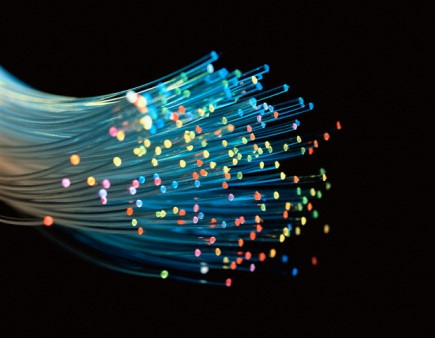Introduction to Physics of fiber optics
Fiber optics is basically the transmission of voice, data, and media by the propagation of light through transparent and thin fibers.

In telecommunications, fiber optic technology has virtually replaced copper wire in long-distance telephone lines and is used to connect computers within local area networks. Fiber optics is also the base of the foundation of the fiberscopes which is used in examining the internal organs of the body (known as endoscopy) or in the inspection of the interiors of the manufactures structural products. In fiber optics, the spherical lenses and flat optics also plays a vital role as they are used in a wide range of application, to know more about lenses and optics visit pfg optics.
The basic medium of fiber optics is hair-thinning fiber which is sometimes made of plastic but mostly glass. In general, a glass optical fiber has a diameter of 0.125 mm (0.005 inches) or 125 micrometers (µm). Actually, this is the diameter of the outer reflecting layer also known as cladding. The diameter of the inner transmitting layer is as small as 10 µm which is also known as the core. Through a process known as total internal reflection, beams of light beamed into the fiber can be spread over large distances with remarkably low attenuation, or reduction in intensity, within the core. The degree f attenuation over distance changes on the basis of the wavelength of light and to the composition of the fiber.
It’s History
During the early 1950s when the invention of cladding/core design was done, because of the presence of the impurities their usage got limited to the short lengths sufficient for endoscopy. In 1966, electrical engineers Charles Kao and George Hockham working in England suggested using the fiber for telecommunications, and within two decades using silica glass fibers with sufficient purity to pass infrared light gave permission was being produced signals can be transmitted can travel up to 100 km (60 mi) or more without being boosted by repeaters.
In 2009, because of his work in fiber optics physics, Kao received a Nobel prize. Plastic fibers, usually made of polymethylmethacrylate, polystyrene, or polycarbonate, are cheaper to produce and more flexible than glass fibers, but their greater attenuation of light greatly reduces their use within buildings or automobiles. Does. does. Limits links.
Optical telecommunication usually takes advantage of infrared light which has a wavelength range of 0.8-0.9 µm or 1.3-1.6 µm that is efficiently produced by semiconductor lasers or light-emitting diodes and that posses the least attenuation in glass fibers.












